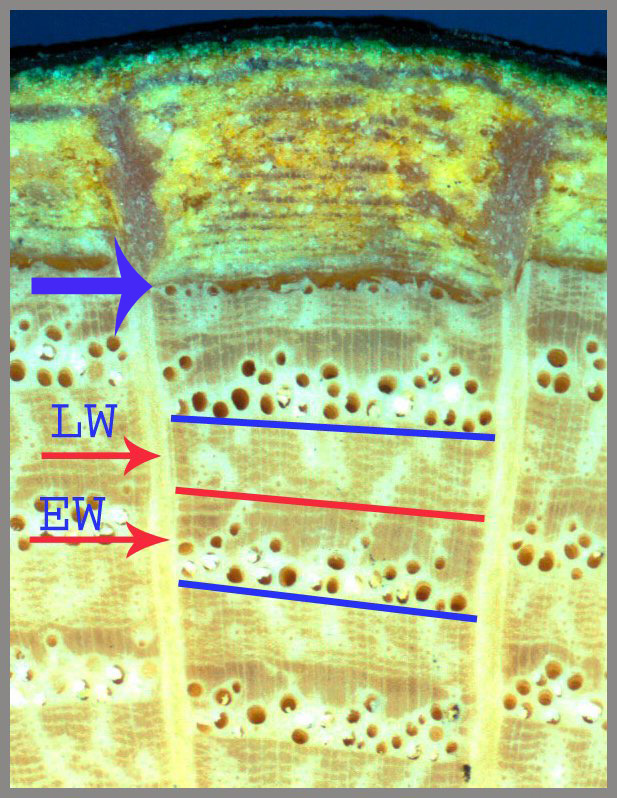

 This
is a Red Oak sample - a ring porous, angiosperm tree. Earlywood - also known as Springwood and
Latewood -
also known as Summerwood are represented here. Please allow me to explain.
This
is a Red Oak sample - a ring porous, angiosperm tree. Earlywood - also known as Springwood and
Latewood -
also known as Summerwood are represented here. Please allow me to explain.
Between the two blue lines is one growth increment in girth. We separate the increment. The red line separates the earlywood from the latewood. [EW Arrow] Represents the Earlywood formed in the Spring and [LW] represents the Latewood formed in the Summer.
This sample also shows how large amounts of fluids are loaded in the springwood vessels while a moderate amount is loaded in the summerwood vessels. This is common with ring porous trees. Diffuse porous trees load moderate amounts of liquids (water with elements dissolved within) in both the springwood as well as the summer wood.
If you look closely at the cambium zone area (Blue Arrow), you will see this sample was cut in the early spring just as the larger vessels were beginning to form a new increment.

Above - Sometimes under certain conditions a tree will only form springwood and then shut down. We believe this a way on conserving energy (a survival feature). Environment must play a roll in this function. When this happens it is difficult to see where one increment begins and one ends. Between the white arrows only springwood formed for many years.

Dictionary MAIN
PAGE
Text & Graphics Copyright © 2004
Keslick & Son Modern Arboriculture
Please report web site problems, comments and words of interest,
not found.
John A. Keslick, Jr.